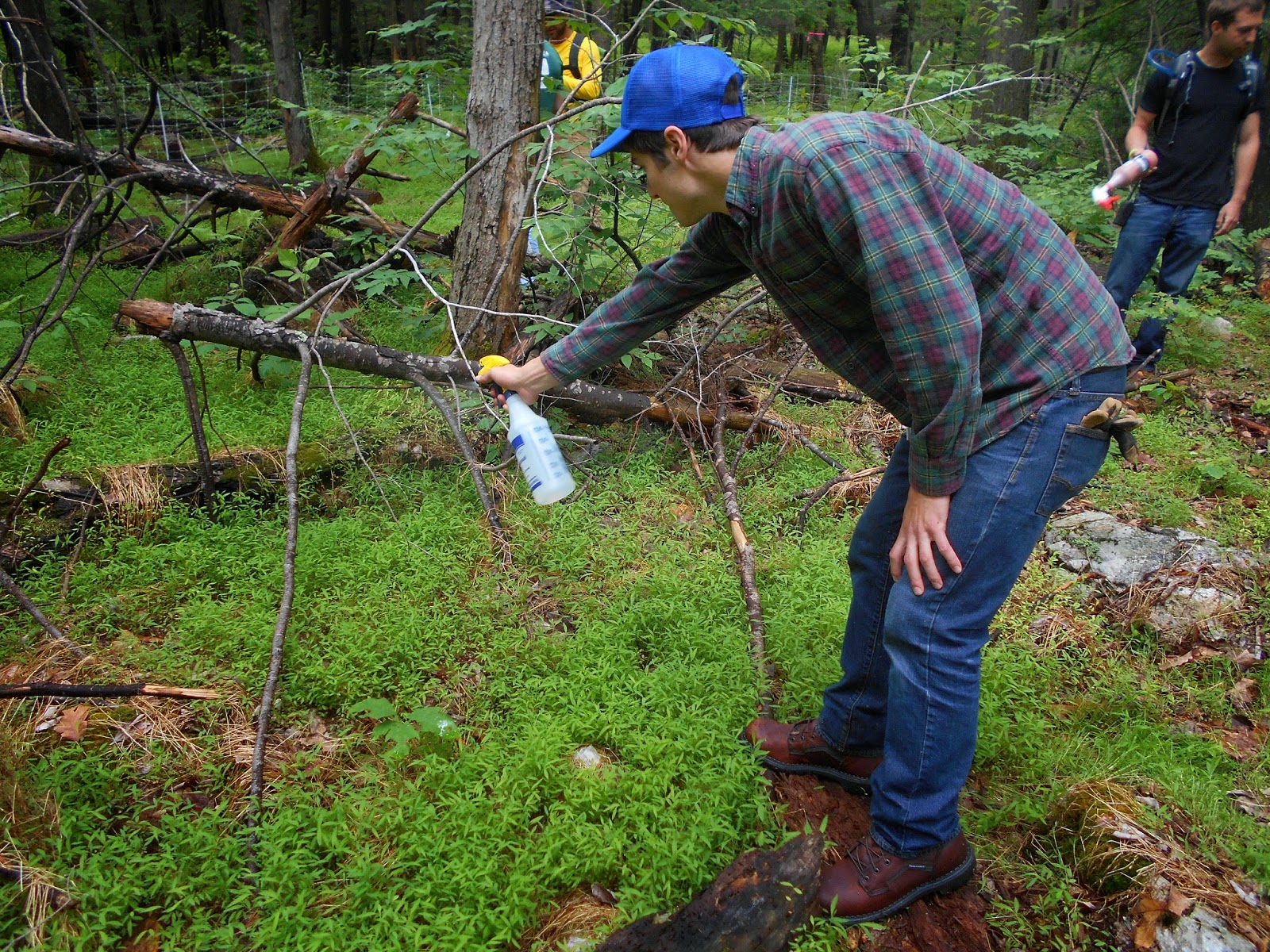Starting last year, with the aid of US Department of Agriculture Natural Resources Conservation Service (NRCS) funding, we committed to a multi-year effort to contain invasive plants on sanctuary grounds. This support allowed us to move forward on a the current Best Management Practice (BMP) herbicides. Committed to what is the BMP a search for an alternative technique that would lessen the amount of herbicide used on our grounds, especially in riparian areas. We have heard about goats being utilized in controlling other invasive plants throughout many biotas. In Pennsylvania, "Goats in the Woods" was initiated several years ago at several state parks to lessen undergrowth in forest interiors with success. However, it was not clear if they were effective in targeting a single species such as asian stilt grass. We set out to determine if goats would be an effective alternative to herbicides and weed whacking.
The
first thing we needed in preparation for the livestock was a means of keeping
the animals from running off and protected from any predators. Portable electric fencing
was the best way of achieving this goal. Three rolls of ElectroStop@Plus single spike 164' fence and accessories were provided by Department of Conservation and Natural Resources (DCNR). This enabled us to build with one fence a 40’ by 40’ paddock. They could be rolled up, moved, and setup in a matter
about 15 minutes. In order to keep them powered for an extended period of time,
we used a 100 amp hour AGM deep cycle marine battery that could be brought in and out in the forest without having to worry about spilling any caustic solutions. This battery
lasted about 5 days before it needed a charge. When it came time to charge the
battery, it was switched out with a 60 amp hour battery, taken out of the woods,
and then brought back in after charging over night.
The
initial round of goats consisted of 16 goats total, 5 mothers and 11 kids. Getting
all 16 of the goats a half-mile into the woods took many helping hands and a
huge chunk of the morning. There is no way this could be done every morning, so
the goats remained at the site over night. After a day or two, just about every
native plant in the enclosed area was eaten, and the stilt grass was just
nibbled at. We then expanded the area from 40’ by 40’ to 80’ by 80’. In a last
ditch effort we sprayed to the stilt grass with sugar water and the natives
with a cayenne pepper solution. This worked for about 15 minutes before they just
ate the natives anyway. After a week the goats were sent back.
After
some looking into livestock more, we called a local family who were willing to
lend us two of their sheep. These sheep again only nibbled at the stilt grass,
and were sent back after just a couple of days with no results. It cannot be
said that no sheep are effective, but these were used to eating sheep feed
rather than grazing for food.
Finally
in our last attempt, we brought in 4 goats from St Thomas...Pennsylvania that is, and who were
said to eat stilt grass. They were given only a week no matter how successful
they were, because we simply ran out of time to use livestock this summer.
However, if they were effective they would be brought back next year. They did
nibble on the stilt grass and brought a lot of attention to the problem of invasives.
Ultimately,
it was decided by Hawk Mountain Managers that goats can be effective in some applications but not an efficient means in what we were trying to accomplish. Trying
to herd goats into the middle of the forest is not practical. They do not want
to be put in the woods like that and are very reluctant to follow. It only
takes a couple of days for the goats to be ready to move on to their next
paddock due to eating all non-targeted native vegetation. But,
beyond all that, they eat the native plants along with only nibbling the invasives. So, if
the purpose of the project is to be protecting the forest biodiversity, then we concluded that the use of livestock
is not the best method for controlling asian stilt grass.


















